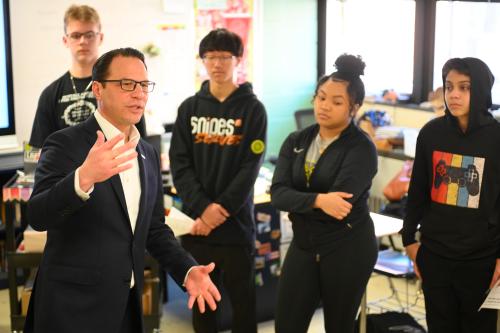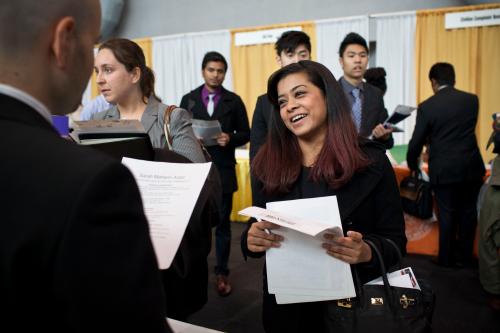This blog is part of a Brown Center series called State of the States: Gubernatorial Policy Priorities in 2023, in which Brookings experts analyze the education policy proposals outlined in governors’ 2023 State of the State addresses.
The federal government plays a limited role in education policy—states and local governments are primarily responsible for educating our nation’s youth. The first federal laws about education governance weren’t introduced until 1965 with the Elementary and Secondary Education Act (ESEA) and Higher Education Act (HEA). And still, states are given broad latitude to determine how to best implement these federal laws in their states. Today, the federal government provides only about 10% of funding for K-12 public education and does not directly contribute to college operations (though the U.S. Department of Education administers a large portfolio of financial aid programs to students pursuing postsecondary education).
States are often seen as “laboratories of democracy”—individual systems with their own executive, legislative, and judicial branches that may experiment with the development and implementation of policies to inform policy adoption in other states and at the federal level. These state-level policies then tend to “diffuse” throughout the country. One example of the prominent role that states play in agenda setting when it comes to education policy is the Common Core State Standards, K-12 education standards developed by the Council of Chief State School Officers and the National Governors Association, not by the federal government.
The present moment reveals important insights into states’ priorities on public education. Most education systems—from early childhood to K-12 to postsecondary—are still reeling from the harmful effects of the pandemic and pandemic-era political conflicts. Many systems are also grappling with the wave of censorship bills and book bans sweeping K-12 schools and colleges across the country. In this context and with so much turnover taking place in state houses across the country—36 states held gubernatorial elections last fall with nine new governors starting their terms in 2023—we aim to understand what these changes mean for education policy.
In this series, we focus on gubernatorial education priorities for 2023 to understand what state laboratories are experimenting with. Each year, many of the nation’s governors deliver their “State of the State” reports. Analogous to the President’s State of the Union, these addresses provide governors an opportunity to present their policy priorities for the year and the remainder of their terms. In this series, we first review gubernatorial priorities laid out in governors’ State of the State addresses. We then provide key contextual information about these efforts — what the research says about various proposals and lessons learned from prior attempts to implement similar policies—that we hope can guide the transition from policy priority to policy in practice.
To do so, we rely on resources developed by teams at FutureEd, the Education Commission of the States, and the National Governors Association. These teams collated governors’ State of the State videos and transcripts, coded education topics covered, and made these resources publicly available for analysis. We are grateful for their careful work which this series builds on.







Commentary
State of the States: Gubernatorial policy priorities in 2023
April 5, 2023